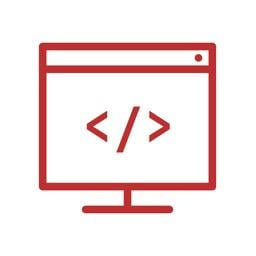A Comprehensive Introduction to Magento Development for Beginners: Setup, Themes, and Custom Modules
A Comprehensive Introduction to Magento Development for Beginners: Setup, Themes, and Custom Modules
Magento is one of the most powerful and flexible e-commerce platforms in the world. Whether you're a business owner planning to launch an online store or a developer stepping into the e-commerce development space, understanding the basics of Magento is a valuable skill. This guide walks you through the core areas of Magento development — from setting up your environment, working with themes, to understanding custom modules — all in beginner-friendly terms.
What is Magento?
Magento is an open-source e-commerce platform built to give businesses complete control over the look, feel, and functionality of their online stores. It’s scalable, customizable, and suitable for businesses of all sizes — from small startups to large enterprises.
Magento comes in two main editions:
-
Magento Open Source (Community Edition) – Free to use, best for small to medium businesses.
-
Magento Commerce (Adobe Commerce) – A paid version with more advanced features and support.
1. Getting Started with Magento: The Setup
Before you can build or customize a Magento store, you’ll need to set up the development environment. Here's what that typically involves:
a. Server Requirements
Magento has specific server requirements, including:
-
PHP version compatibility
-
MySQL or MariaDB
-
Apache or Nginx web server
-
Composer (a tool to manage PHP packages)
You can set up Magento locally using tools like XAMPP, MAMP, or Docker — or install it on a live server with a hosting provider that supports Magento.
b. Installing Magento
The Magento installation process involves downloading the Magento source code (or using Composer), setting up a database, and going through a web-based installation wizard. This wizard lets you define the store name, admin username, and other key settings.
Once installed, you get access to two main areas:
-
Frontend: What customers see.
-
Backend (Admin Panel): Where you manage products, orders, settings, and content.
2. Magento Themes: Creating the Look and Feel
Themes control the appearance of your Magento store — how it looks, how it’s laid out, and what the customer experience feels like.
a. What Is a Theme in Magento?
A Magento theme is a collection of files (like templates, stylesheets, images, and layouts) that define the design and visual elements of your store. You can either:
-
Use Magento's default theme (like Luma),
-
Download a pre-designed theme from the Magento Marketplace, or
-
Create your own custom theme.
b. Customizing Themes
Magento allows you to create a child theme based on an existing one, which means you can override only specific parts of a theme without altering the original. This is useful for keeping customizations safe during updates.
Themes can be adjusted for:
-
Layout (e.g., two-column or full-width)
-
Color schemes and fonts
-
Header, footer, and navigation menus
-
Product page and checkout styles
3. Understanding Custom Modules in Magento
Magento is built on a modular architecture. This means different features (like checkout, product catalog, or search) are self-contained components called modules.
a. What is a Module?
A module in Magento adds a specific piece of functionality to your store. For example, a module might add a "Gift Wrapping" option at checkout or integrate a third-party shipping service.
Modules can be:
-
Core Modules: Built-in functionality by Magento
-
Third-Party Modules: Extensions from developers and marketplaces
-
Custom Modules: Built from scratch to meet specific needs
b. Why Use Custom Modules?
Sometimes, you need features that aren't available by default. Custom modules give you the ability to:
-
Add new features
-
Override existing logic
-
Integrate with APIs or external systems
-
Extend existing Magento features without hacking the core code
Even though module development requires technical knowledge, understanding the purpose of modules helps you plan your store’s features better and communicate clearly with developers.
Final Thoughts
Magento is a rich, powerful platform with a steep learning curve — but it offers unmatched flexibility and control. Whether you're managing the setup, designing a custom theme, or adding new functionality through modules, a foundational understanding of these elements will make your Magento journey much smoother.
As a beginner, focus on:
-
Getting comfortable with the Magento admin panel
-
Exploring existing themes and layout options
-
Learning what modules do and how they can transform your store
And remember — there’s a large, active Magento community, so you’ll never be short on tutorials, extensions, or advice as you continue learning.
Easyupload - Why Professional Website Design Matters More Than Ever for Law Firms, Doctors, and Consultants
4shared - Why Professional Website Design Matters More Than Ever for Law Firms, Doctors, and Consultants
Depositfiles - Why Professional Website Design Matters More Than Ever for Law Firms, Doctors, and Consultants
Files.fm - Why Professional Website Design Matters More Than Ever for Law Firms, Doctors, and Consultants
Mediafire - Why Professional Website Design Matters More Than Ever for Law Firms, Doctors, and Consultants
Btafile - Why Professional Website Design Matters More Than Ever for Law Firms, Doctors, and Consultants
Dz4up - Why Professional Website Design Matters More Than Ever for Law Firms, Doctors, and Consultants
Dosya - Why Professional Website Design Matters More Than Ever for Law Firms, Doctors, and Consultants
Filefactory - Why Professional Website Design Matters More Than Ever for Law Firms, Doctors, and Consultants
Scribd - Why Professional Website Design Matters More Than Ever for Law Firms, Doctors, and Consultants
Slideserve - Why Professional Website Design Matters More Than Ever for Law Firms, Doctors, and Consultants
Docs Google - Why Professional Website Design Matters More Than Ever for Law Firms, Doctors, and Consultants



Comments
Post a Comment